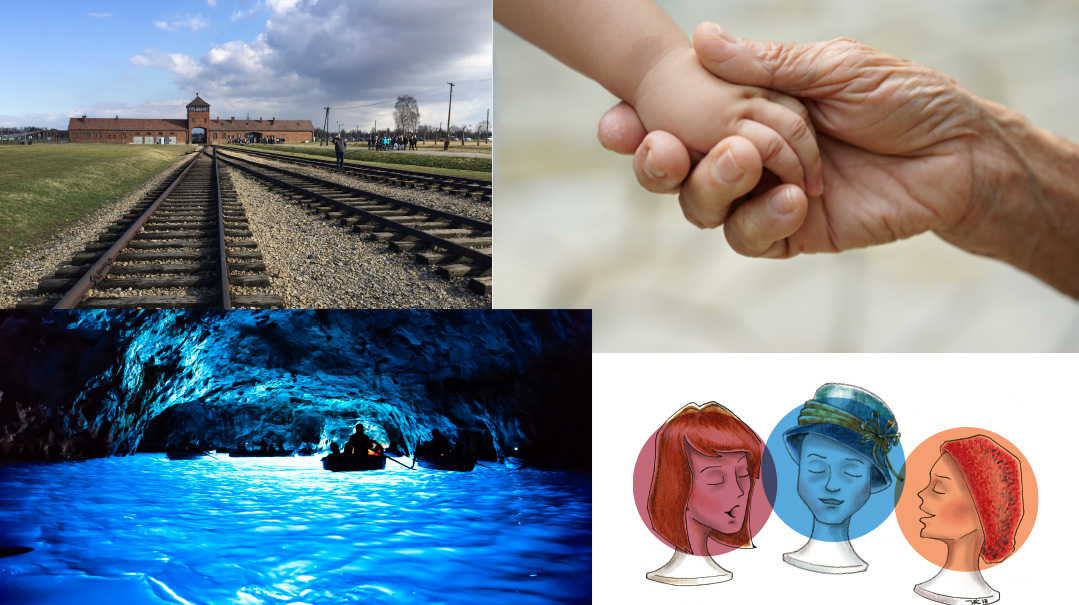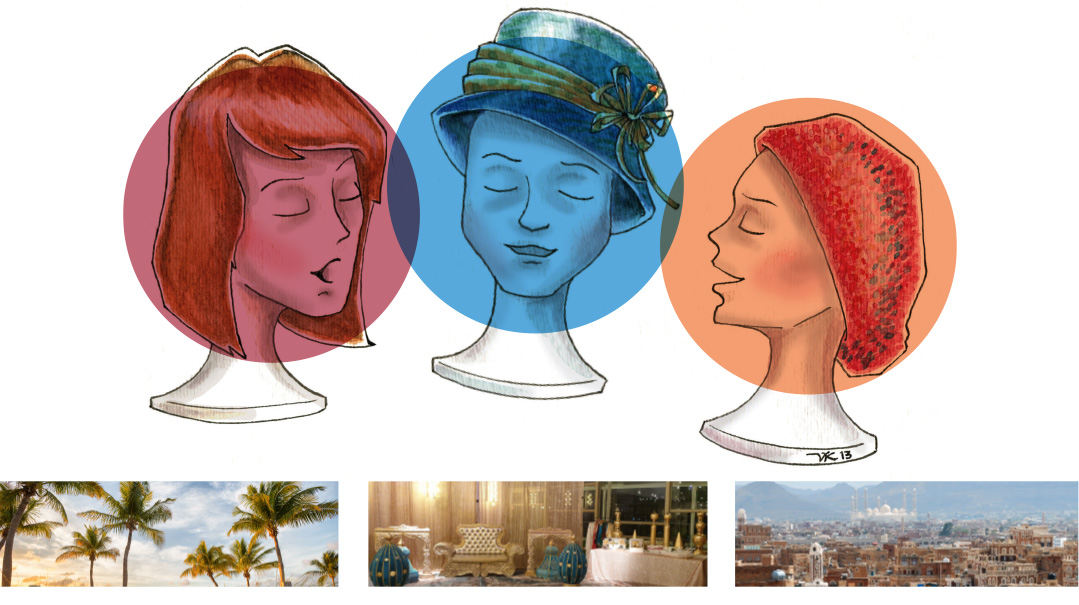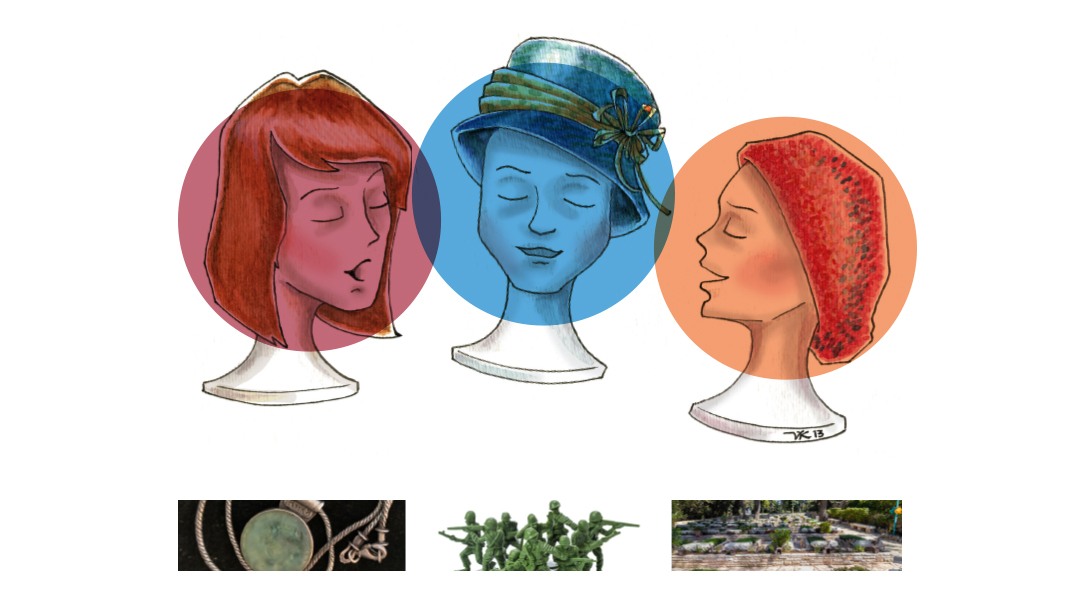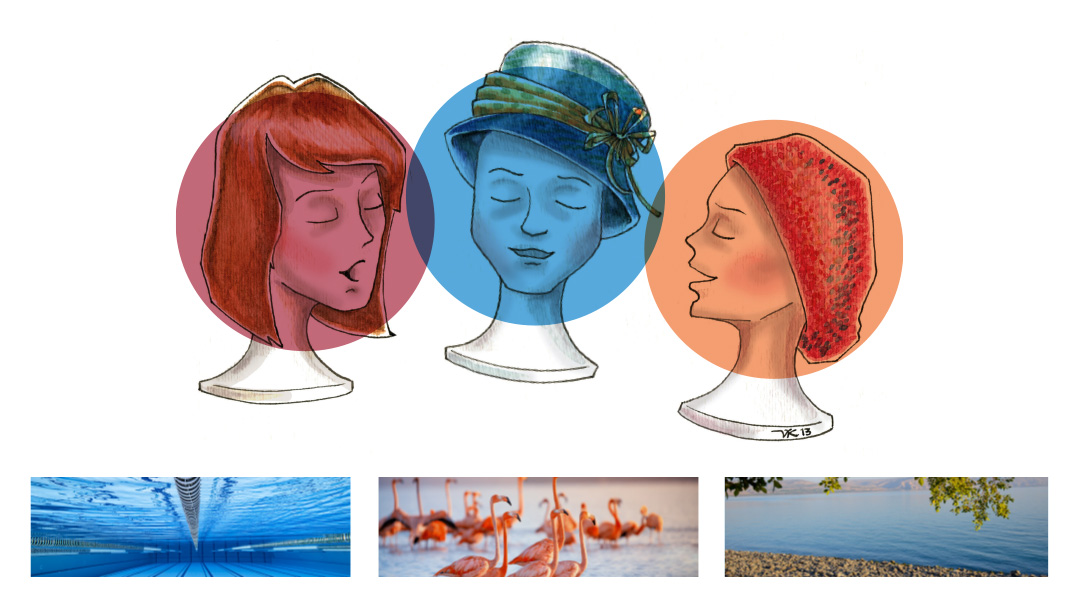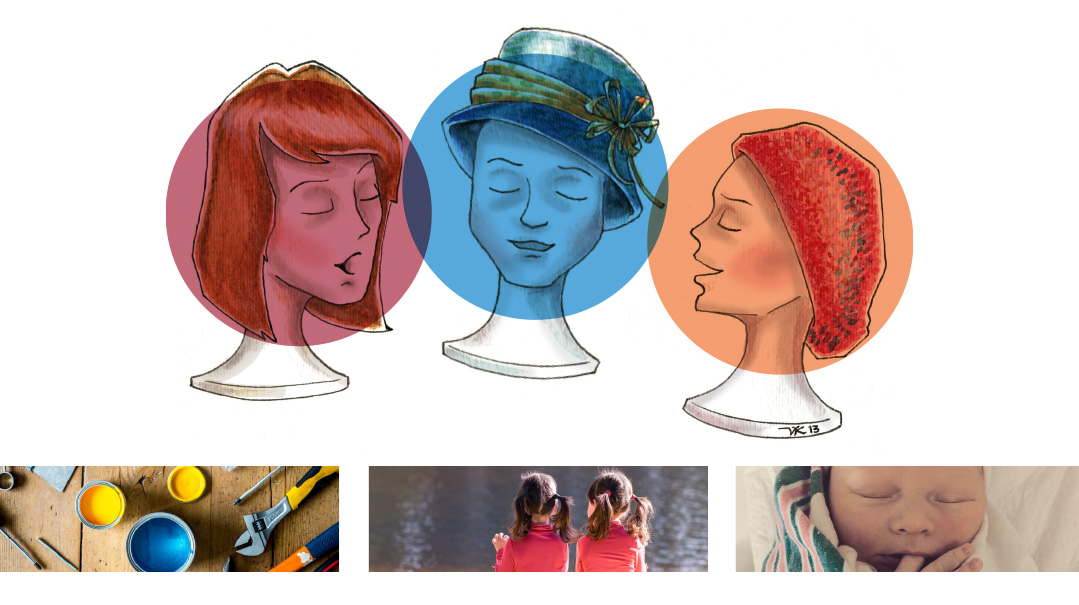Sewing It Together
| January 27, 2021Using the torn threads of her past, Mommy stitched a beautiful new life
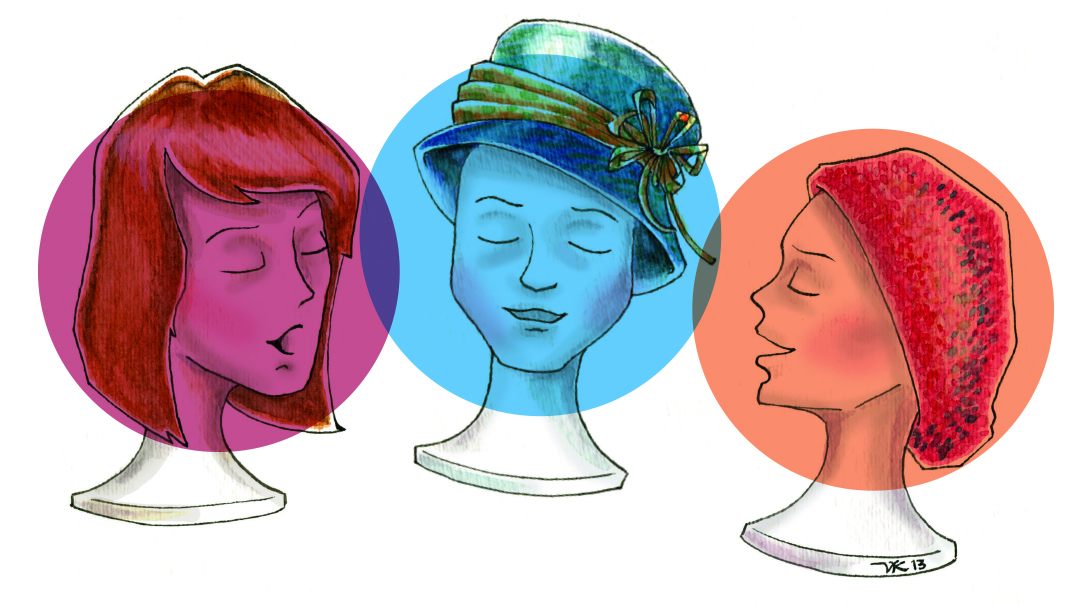
To some people, sewing is an art, a satisfying means of creative expression. To others, it’s a profession. To many of us it’s simply a way of keeping our clothes from falling into tatters, a necessary evil that keeps our buttons buttoned, our hems from sagging.
To us Sisters, though, sewing represents one thing: our mother, Rose Stark a”h.
The word evokes an almost tangible image of Mommy plying a dressmaker’s needle in order to help Daddy — who gently wielded a butcher’s meat cleaver — feed and clothe the three of us, to pay for the steep but necessary costs of a Torah education.
It also evokes a metaphoric image.
Using the torn threads of her life, her family, her beliefs — strong threads extracted from the ashes of Auschwitz — Mommy seamlessly stitched together a reconstructed fabric. The fabric of her new life. The fabric of our own lives and the lives of our children and grandchildren.
Marcia alters her view of…
Alterations
The Stark Sisters don’t do hems. If a hem comes down, we’ll try the scotch tape or safety pin methods. I’ve even been known to try stapling a hem. If that doesn’t work, the garment gets relegated to the back of the closet, to be unearthed years later during a badly needed closet purge.
And buttons? When my husband a”h was alive, he was the official button sewer. Now, if a button falls off… time for a new jacket.
Why this aversion to sewing? Because in my head I hear our mother’s heavily accented English:
My girls will not learn to sew. They’ll go to college. They’ll get jobs without back-breaking, eye-straining manual labor. I was the smartest in my class in Munkacs, but I didn’t have the opportunity to go to university. Instead, I ended up in Auschwitz. And then, in America, the only jobs I could find were in sewing. Now I’m sitting on the floor marking hems for the “kushenyirkas.”
My personal translation of kushenyirka — probably all wrong — is “vain, cheapskate, haggling lady.” I picture a woman scrutinizing herself in a mirror, barely noticing my mother down on the floor. She only cares about two things:
How do I look? How much will the alterations cost?
I flash back to Mrs. Kushenyirka standing on what Mommy called a “marker” — an ingenious contraption consisting of a circular platform for the woman to stand on, a measuring stick attached to a rotating ring, and a rubber bulb that Mommy would keep squeezing. It would poof out perfectly even, perfectly measured chalk lines all around Mrs. K’s desired hemline. Mommy would then use the little white lines to guide her in pinning up the hem.
Mrs. K frowns at her reflection. No. Let’s try that half an inch shorter.
And so the poofing-and-pinning process would start again.
Before our mother started working in fashionable dress stores, I observed many Mrs. Kushenyirkas coming to our house for fittings. Afterwards I’d watch Mommy bending over her old Pfaff sewing machine or peering over her glasses while hand-stitching with thimbled and nimble fingers.
That’s why I was horrified when my granddaughter Ayelet* presented me with a business card announcing the opening of a new sideline: Alterations!
When my shock wore off, I explained my dismay.
“But Bubby,” she replied, “I wasn’t forced into sewing like Elter Bubby. Sewing brings me joy. It’s an expression of my creativity. An art form.”
Ayelet also reminded me that my mother’s father and grandfather were the famous Moishe and Avrum beketshe schneiders.
“Remember how she’d say that all Eastern Europe came to Munkacs to buy their frock coats? Elter Bubby was proud to follow in their footsteps.”
Hmm… Was it possible that my mother — while bemoaning her lost educational opportunities — also took pride in carrying on a family tradition?
But wait… I described the kushenyirkas of my memory. “Won’t your customers look down on you?” I asked.
“Not at all,” Ayelet replied. “They value alterations. It helps them look their best. Helps them be tzniyusdig yet stylish. And they’re nice people. Never snobby. Never rude.”
Hmm… Is it possible that the nature of alterations clientele has altered? Have the women become more compassionate, less self-involved? Or is it my own perception, my own attitude toward them that may need some altering?
How I wish Mommy were around, so I could ask her.
How did you really feel about sewing? Did you love it? Did you hate it? Both? How did you feel about the women you sewed for? Did you REALLY not want your daughters to sew?
In her absence, I turn to my sisters for answers.
Emmy Leah: “My friend’s daughter is making an amazing career out of sewing. The most fashionable families hire her for weddings. Mommy would admire her.”
Miriam: “Mommy would be glad that the sewing gene skipped a generation or two. But she’d be proud that her great-granddaughter is carrying on the family tradition.”
Hmm… I guess Mommy would want me to open my closet, pull out all those hem-dropped skirts, and give them to Ayelet for mending.
And she’d caution, “Make sure you pay her.”
Miriam learns from Mommy’s…
Sewing Lessons
Mommy may not have taught us to sew, but looking back at her life and mine, I realize that she gave me many sewing lessons. She didn’t teach me how to sew a hem or thread a needle (I still can’t do either). But with her bobbins and needles and thimbles, she taught me how to live.
Mommy’s sewing career spanned more than five decades, and I learned something from each of her jobs. Her first job in the United States was in Field Brothers, a men’s clothing store. “I came to America on a Thursday,” she told us. “By Monday I was enrolled in night school, and by Wednesday I had a job.”
Mommy’s sewing lessons: The vital importance of education. The humility and courage to learn something new — in this case, adding English to the six languages she already spoke. If something needs to be done, get it done. Quickly.
When we were kids, most children stayed home with their mothers until they were five years old. That’s when Mommy worked with Marcia’s kushenyirkas in our living room. By the time Emmy Leah and I were in second or third grade, though, things had changed. Our father a”h had to take early retirement because of poor health. At a time when most of our friends came home to their milk-and-cookies-moms, our mother was working at a series of low-paying jobs in ladies’ dress stores.
We didn’t mind having a working mom, though. Daddy was at home to welcome us, and he could open a can of string beans and grill a steak (the advantage of being a butcher, even retired) as well as any mother could. And we never felt we had to compete for attention with a mother’s fulfilling professional career; as Mommy would occasionally tell us, she was working “to put spaghetti on the table for all of us.”
Mommy’s (and Daddy’s) sewing lessons: Mothers and fathers are a team, doing whatever is needed for their families. Families come first. (Hey, good title for a magazine…)
Mommy had a stint in Philips, a dress store that had her schlepping by bus to Bensonhurst every day. On Sundays, her day off, she would go to Benny’s in Crown Heights and help with the crowds of shoppers. What was her main pleasure during those busy, hardworking years? Watching us pounce happily on whatever she’d brought home from the strip mall next to the store — groceries from Hills, or a sweater or dress for one of us kids that was on sale from E.J. Korvette.
Mommy’s sewing lessons: “Me time” is important, but “You time” — bringing pleasure to others — can also bring satisfaction and joy. Maybe even more.
Then came the huge Bay Ridge bridal store. There were only a few Jews among its large sewing staff, and only one who wouldn’t work on Saturdays: Mommy. Though she worked Tuesdays and Thursdays from 10 a.m. to 10 p.m. to make up the time, there was a lot of resentment that she wasn’t there on their busiest sales day. That, coupled with her coworkers’ jealousy of the rich store owner — who was Jewish — meant Mommy was the object of anti-Semitic remarks and prejudice, sometimes subtle, often not.
It was there that she first heard of Holocaust denial, when a worker told her point-blank that Auschwitz never happened. That sent her on a lifelong mission: to speak publicly about her wartime experiences. (Mommy’s lesson: Confront sheker, and do something to make it better.)
Despite the anti-Semitic undercurrents, she made friends with some of her coworkers. From the Italians, she learned how to make stuffed grape leaves and unbelievable pasta sauce. (Mommy’s lesson: Learn from everyone.)
And then there was the “Syrian-keh.” When writing one of her delightful articles, Mommy described this Middle-Eastern coworker as “a nice woman, though anti-Semitically inclined.” Those words teach a lesson that we can all learn in these uncivil times: that people are complex, life is nuanced, and if you try, you can find something positive in almost anyone. (Even if she’s “anti-Semitically inclined.”)
So, Mommy, thanks for fixing my buttons and my hems. And my life.
Emmy Leah learns to use…
Tools of the Trade
Okay, now you know: We Sisters can’t sew. When it comes to thimbles, we’re all thumbs, and we can find the proverbial needle in the haystack long before we can thread it and fix a shirt button.
But though we never learned the art of sewing, we were always fascinated by the tools of Mommy’s trade. Miriam and I would take turns standing on Mommy’s “marker” and blowing chalk marks on our skirts. The cardboard box of multicolored “seam bindings” next to the sewing machine seemed to us like a packaged rainbow, perfect for making colorful accessories for dolls. We’d spill out a box of pins and needles just to pick them up again with Mommy’s little magnet. And thimbles? Put one on each finger and you could pretend you were wearing gold or silver nail polish!
But our favorite toy, and Mommy’s favorite tool, was her pair of scissors. We’d use them to cut out our paper dolls and accessories and create endless chains from colored paper. Snipped cereal boxes turned into puppets, complete with their own hand-cut stage. Or we’d slash reams of scrap paper into strips just for the fun of it.
The fun of it, that is, until Mommy caught us. She’d sternly take the scissors away, explaining that using them on all sorts of materials would make them dull. “They’re the tools of my trade,” she’d say, and she’d put them away — until we thought of another cutting project and took them out again. We couldn’t figure it out. How could anything so interesting ever become “dull”?
Fast-forward decades. After she retired and moved to Israel, Mommy continued sewing. With her eyesight fading, her children or grandchildren would thread her needles, but her deft hands still wielded the scissors gracefully as she cut the thread, mending our buttons and hems.
But in those last decades, Mommy’s skilled hands and artistic soul moved away from the sewing machine and into her kitchen. Her gurnisht soup (“I have gurnisht in the house, so I’ll make soup”) became famous comfort food for friends and neighbors. The grandchildren clamored for “Babby noodles” whenever they visited. And Mommy gave an Eastern European accent to spicy Moroccan tomato salad, turning “matbucha” into “mootbacha”; pronunciation aside, the Hungarian paprika she added to the recipe brought out the sweetness.
A Friday in Iyar, seven years ago. As usual, Mommy spent the day cooking in the kitchen, preparing a lovely Shabbos, which she enjoyed with children and grandchildren. After Shabbos, as my husband said Havdalah, Mommy, following the Munkacs minhag, quietly said the brachah with him. “Borei minei besamim” — the brachah on the fragrance that comforts us as our neshamah yeseirah leaves us.
Moments later, Mommy’s neshamah left her… left us… left us bereft…
After the levayah and the shivah, it was time to divide Mommy’s belongings. Marcia took the plaque the Hebrew Butcher Workers Union had given Daddy decades before. Mimi chose the tiny silver box Mommy brought from Sweden after the war, in which she kept her pins and needles.
And me? I took Mommy’s scissors.
The scissors now have a place of honor in my kitchen drawer. I use them every Friday to help me with my Shabbos preparations. When I cut open the package of salmon, I almost feel Mommy’s fingers holding the scissors with me. I use the scissors to open the (bought) container of matbucha and remember the mouth-watering taste of her Hungarian-accented mootbachah. And when I cut open the bag of lukshen, the last job of a long day in my kitchen, I feel Mommy’s presence giving me new energies to welcome Shabbos.
My children and grandchildren know I don’t mind them messing up the house. If two-year-old Eitan and Tamar want to take all the cans out of the cupboard — no problem. Moriya and Elisheva are rooting through my jewelry box — have fun! Daniel and Nechemia are wading through the upper kitchen shelves in search of their favorite flavor of Bisli — enjoy!
But all the kids and grandkids (and my husband) know there’s one house rule: nobody plays with Babby’s scissors.
They are, after all, the tools of the trade.
Join the Sisters virtually as they honor their mother at the Rose Stark a”h Memorial Evening on Tuesday, February 9, 7:15 p.m. Israel time. This year’s theme is “Healing and Holocaust: Body and Soul.” Guest speaker: Rabbi Paysach Krohn. The Zoom event is free, but you must register at engl-jer@michlalah.edu. We hope to see you there.
(Originally featured in Family First, Issue 728)
Oops! We could not locate your form.

